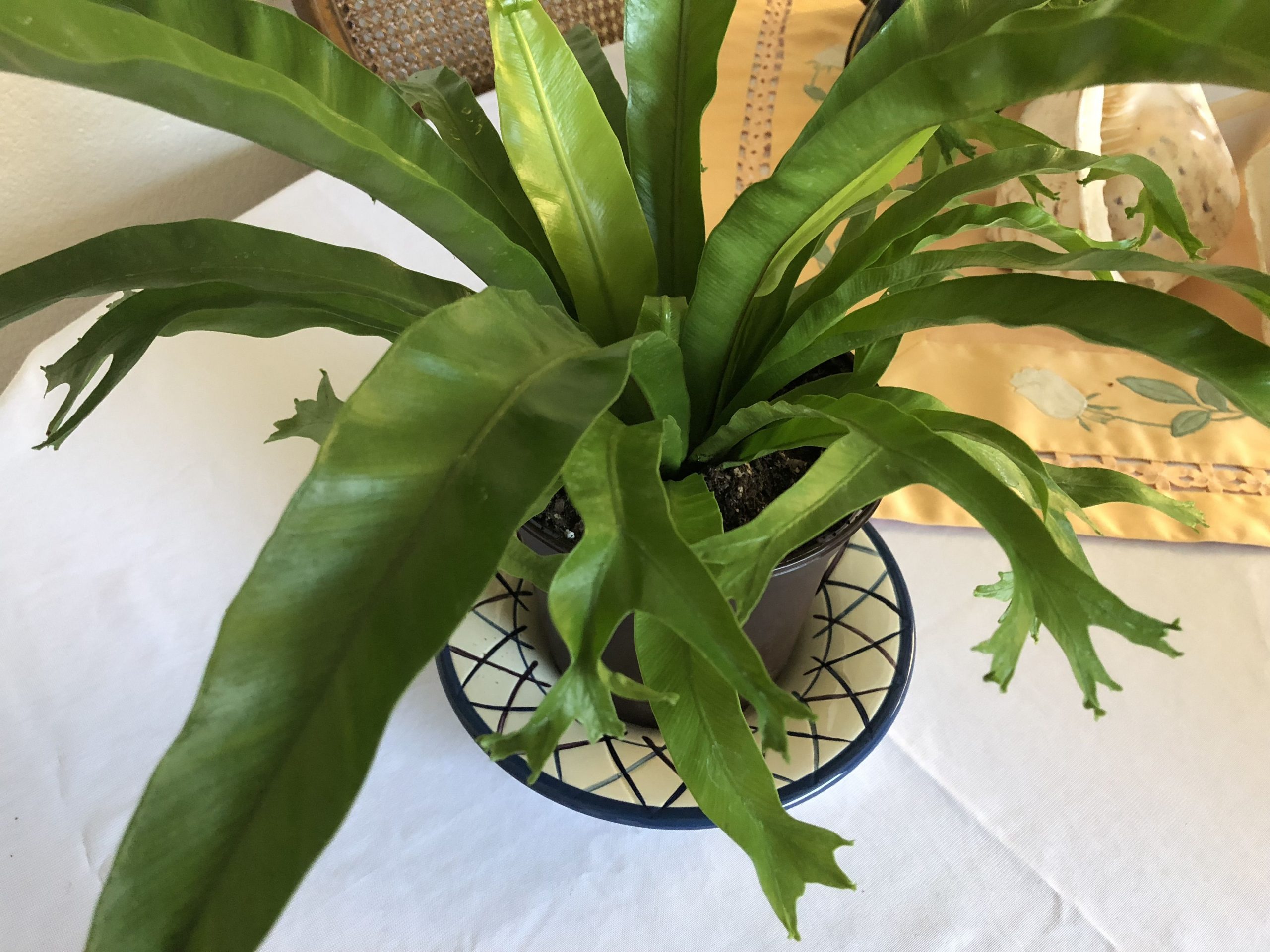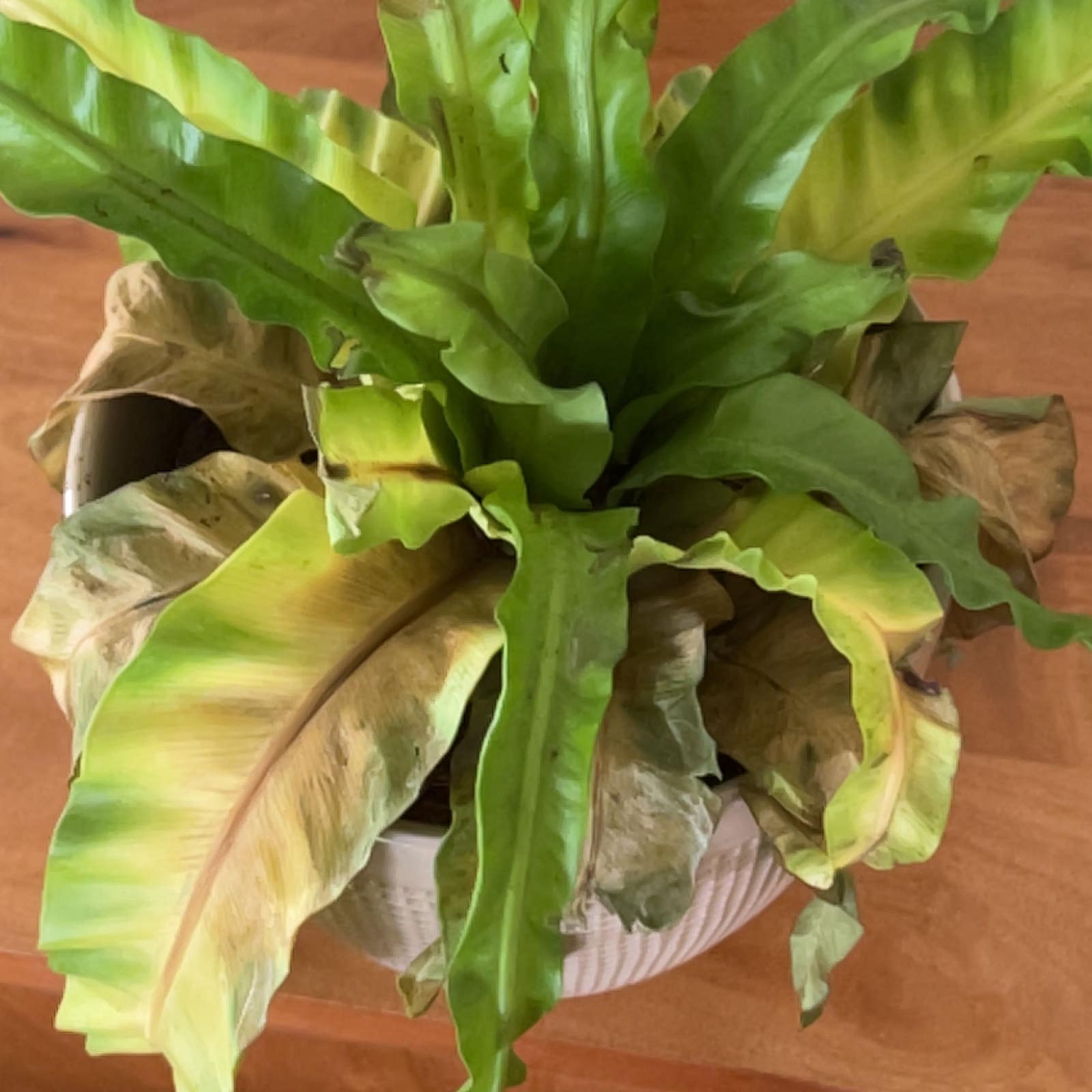Revive your yellowing Birds Nest Fern and bring back its vibrant green glory with expert tips.
As an indoor plant parent, few sights make your heart drop like noticing those once-vibrant green fronds fading to yellow. It’s like watching a close friend get sick – you want to nurture them back to health as quickly as possible.
If you’ve noticed your bird’s nest fern leaves turning yellow, don’t panic. With some detective work and attentive care you can get your fern flourishing again. Let’s break down the common causes of yellow leaves in bird’s nest ferns and the steps you can take to green up that foliage once more.
Why Do Bird’s Nest Fern Leaves Turn Yellow?
Bird’s nest ferns thrive in bright, indirect light and high humidity Their glossy green fronds will stay perky when you meet these basic needs When something is off in their environment, the leaves turn yellow as a cry for help.
Here are the most common culprits behind the yellow leaf epidemic
Under or Overwatering
Bird’s nest ferns need consistently moist soil – think of a freshly wrung-out sponge. Underwater and the leaves crispy up. Overwater and root rot sets in. Both extremes can cause yellowing. Check that you’re watering thoroughly once the top inch of soil dries out.
Low Humidity
The humid conditions of their native rainforest environment are ideal for bird’s nest ferns. Dry air will stress them out. Yellow leaves that are crispy at the edges likely need a humidity boost.
Temperature Extremes
Like Goldilocks, bird’s nest ferns want their environment “just right” – neither too hot nor too cold. Temperatures below 60°F or rapid shifts from hot to cold can induce yellowing.
Insufficient Light
Too much shade and the leaves pale from lack of light. But too much direct sun will scorch the foliage yellow too. Give them bright indirect sunlight for optimal color.
Poor Drainage
Letting bird’s nest ferns sit in water leads to root rot. Make sure the pot has drainage holes and use well-aerated soil to prevent yellowing from excess moisture.
Pests
Spider mites, mealybugs, and other creepy-crawlies can suck the life out of your fern. Inspect regularly and treat any invaders.
Old Fronds
As lower fronds age, they naturally yellow and drop off. This is normal, but excessive yellowing of older leaves may indicate an issue.
By identifying the specific cause behind the yellowing, you can take targeted action to rehab your bird’s nest fern.
How to Fix Yellow Leaves on a Bird’s Nest Fern
Ready to transition those sickly yellow fronds back to lush green? Follow these troubleshooting tips:
Adjust the Watering
If you suspect under or overwatering, modify your schedule. Check the soil moisture before watering and adjust frequency and volume accordingly. Water deeply until it drains freely from the drainage holes.
Increase Humidity
Use a humidifier, pebble tray, or frequent misting to raise the humidity around your fern. 60-70% is ideal.
Modify Light Exposure
Place in bright indirect light, shielded from hot direct sun. Supplement with grow lights if needed.
Regulate Temperature
Keep your fern around 70°F and avoid drafts or rapid temperature shifts.
Improve Drainage
Repot in a container with holes using loose, aerated potting mix if drainage is poor.
Treat Pests
Insecticidal soap, neem oil, or horticultural oils can eliminate most attackers. Remove badly damaged fronds.
Remove Old Fronds
Prune aging yellow lower leaves to maintain an attractive appearance and encourage new growth.
Fertilize Judiciously
Apply a diluted balanced houseplant fertilizer to nourish, but avoid over-fertilizing.
Increase Air Circulation
Improve air flow to prevent fungal or bacterial diseases. Space plants, use a fan, or put near a vent.
With persistence and attentive care tailored to the specific cause, you can nurse your bird’s nest fern back to vibrant health. The key is listening to what your plant is trying to tell you and making the appropriate adjustments.
How to Prevent Bird’s Nest Fern Leaves From Turning Yellow
They say that an ounce of prevention is worth a pound of cure. Follow these care tips to keep your bird’s nest fern green and thriving right from the start:
-
Choose a location near a bright window, out of direct sunlight. East or west-facing are ideal.
-
Water thoroughly when the top inch of soil dries, taking care not to oversaturate.
-
Use containers with drainage holes and well-aerated potting mix.
-
Keep the room temperature consistently around 65-75°F.
-
Maintain humidity around 60-70% through misting, pebble trays, or humidifiers.
-
Wipe leaves regularly to prevent dust buildup and inspect for pests. Act fast if detected.
-
Repot every 2-3 years in spring using fresh potting mix. Trim congested growth.
-
Fertilize monthly during spring and summer with a balanced houseplant food.
By replicating the moist, warm, tropical environment bird’s nest ferns love, you can avoid many issues that lead to yellowing. Be attentive, take preventative measures, and enjoy the graceful green fronds of a happy, healthy fern.
FAQs About Bird’s Nest Ferns With Yellow Leaves
Why are the edges of the leaves turning yellow?
If the leaf edges alone are yellowing, the bird’s nest fern likely needs more humidity. Increase misting or get a humidifier to provide the moist environment it prefers.
Why are the oldest leaves turning yellow?
Older leaves naturally yellow and drop off as the plant matures. Excessive yellowing of lower leaves can mean it needs more light or fertilizer. Remove aging leaves to improve appearance.
What causes the leaf tips to turn yellow?
Yellow leaf tips are often from inconsistent watering. The soil may be too dry between waterings. Check moisture frequently and water before the top inch of soil dries out.
Should I remove the yellow leaves?
It’s best to remove any all-yellow or mostly yellow leaves. This preserves the plant’s strength so it can support new healthy growth. Just don’t over-prune.
How long does it take for leaves to turn green again?
With proper care tailored to the cause, you should see improved leaf color within 1-2 weeks in most cases. Some yellowing on old leaves may persist.
Reviving a yellowing bird’s nest fern takes vigilance, plant detective skills, and a few simple adjustments. But nothing beats the satisfaction of nursing your plant back to health and enjoying those vibrant fronds once more. With the right balance of light, water, and humidity, you can get your fern flourishing again.
Signs of Healthy Leaves
The glossy, apple-green fronds of the Birds Nest Fern stand out among houseplants that are very lush. They arch with grace. Healthy leaves have bright colors, a crisp feel, and spread out from the plant’s central rosette in a way that looks like a bird’s nest.
️ Pests and Diseases
Unwanted guests like mealybugs or fungal infections are the party crashers of the plant world. Theyll turn leaves yellow faster than a banana left in the sun. Regular inspections and a gentle wipe-down with soapy water can keep these pests from crashing the chlorophyll party.
Common Problems with Bird’s Nest Fern | Asplenium Nidus Care
- The Ultimate Guide to Growing Strawberries in Raised Beds - August 8, 2025
- No-Dig Garden Beds: The Easiest Way to Grow a Beautiful Garden - August 6, 2025
- How to Protect and Preserve Wood for Raised Garden Beds - August 6, 2025


